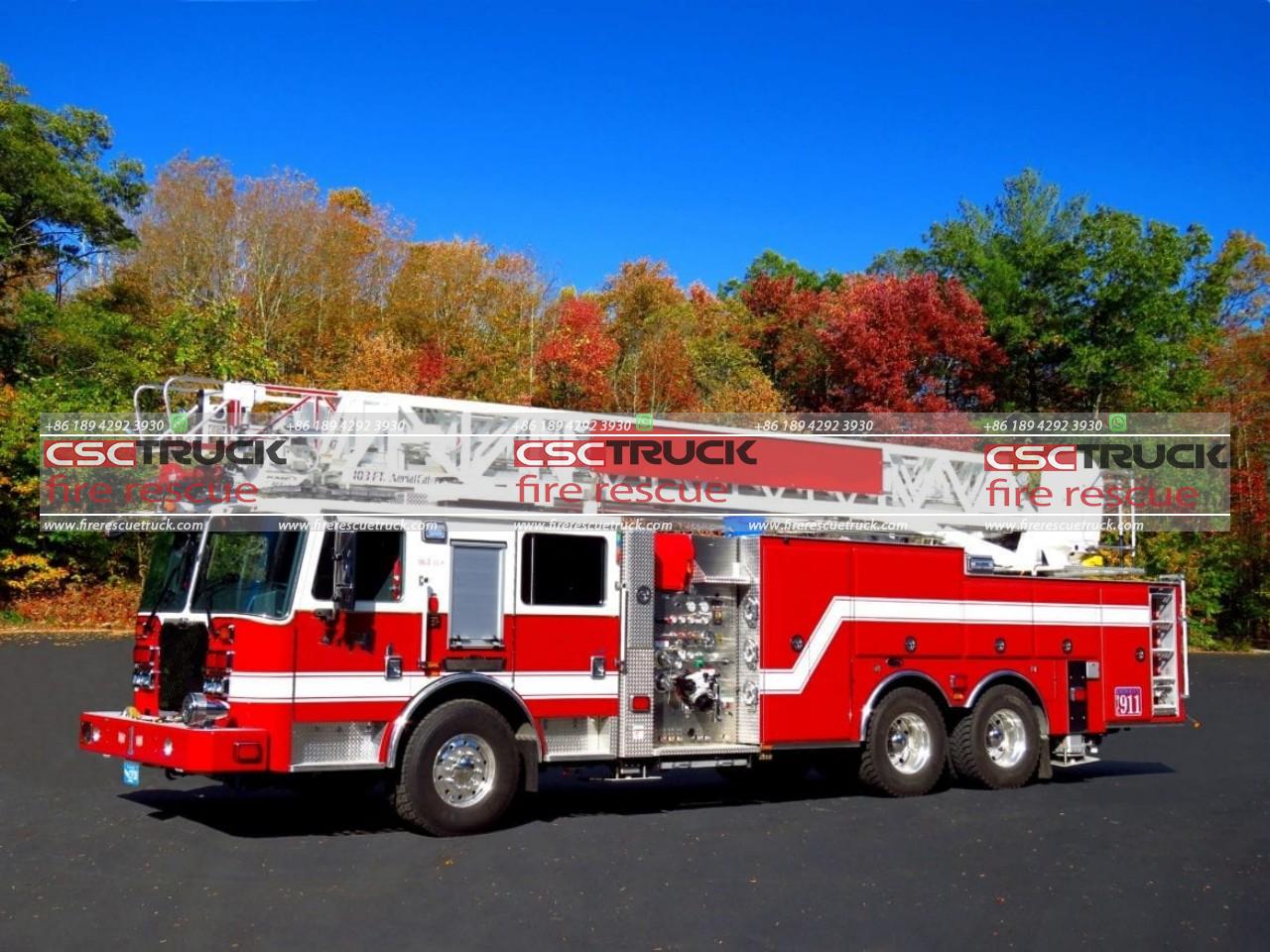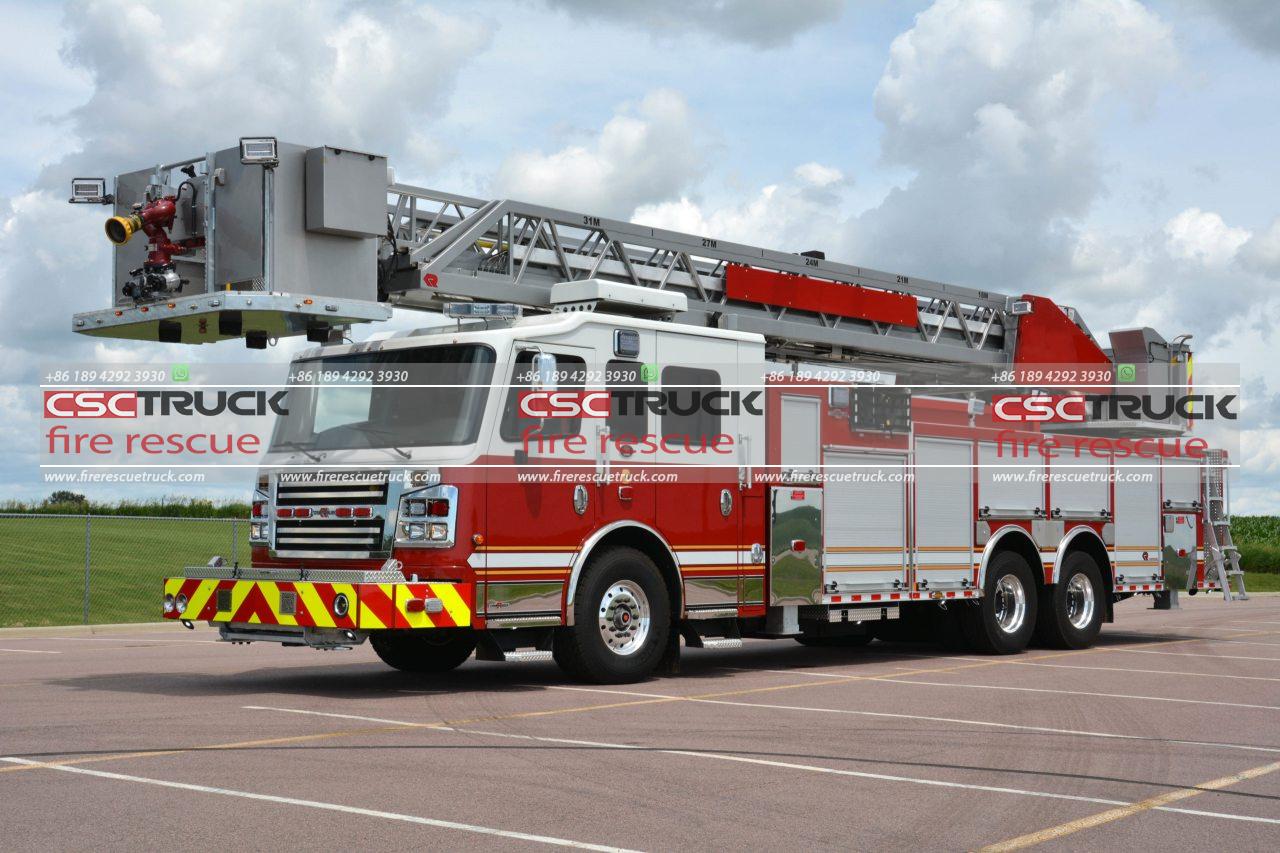In the world of firefighting, speed, agility, and efficiency are crucial factors that can mean the difference between saving lives and witnessing devastating losses. When faced with fires in tall buildings or inaccessible areas, firefighters rely on specialized equipment to overcome these challenges. One such vital piece of machinery is the aerials fire truck. This powerful vehicle is designed to extend the reach and provide elevated water delivery, enabling firefighters to combat fires effectively in high-rise buildings and other challenging environments. In this article, we will delve into the workings of an aerials fire truck, exploring how it extends reach and delivers water to the source of a fire.
An aerials fire truck, also known as a ladder truck or a turntable ladder, is a fire apparatus equipped with an extendable ladder or an articulated boom that allows firefighters to access elevated areas. These trucks are designed to carry firefighters, equipment, and, most importantly, water to the scene of a fire. The primary purpose of an aerial fire truck is to provide an elevated platform for firefighting operations, enabling firefighters to gain access to the upper floors of buildings and deliver water precisely where it is needed.
One of the key features of an aerials fire truck is its extendable ladder or articulated boom. This component is typically mounted on a turntable at the rear of the vehicle, allowing it to rotate and reach multiple angles. The ladder or boom can be raised, lowered, and extended, providing firefighters with the flexibility to reach heights that would otherwise be inaccessible. The length of the ladder or boom varies depending on the specific model and manufacturer, but they can often extend up to 100 feet or more.
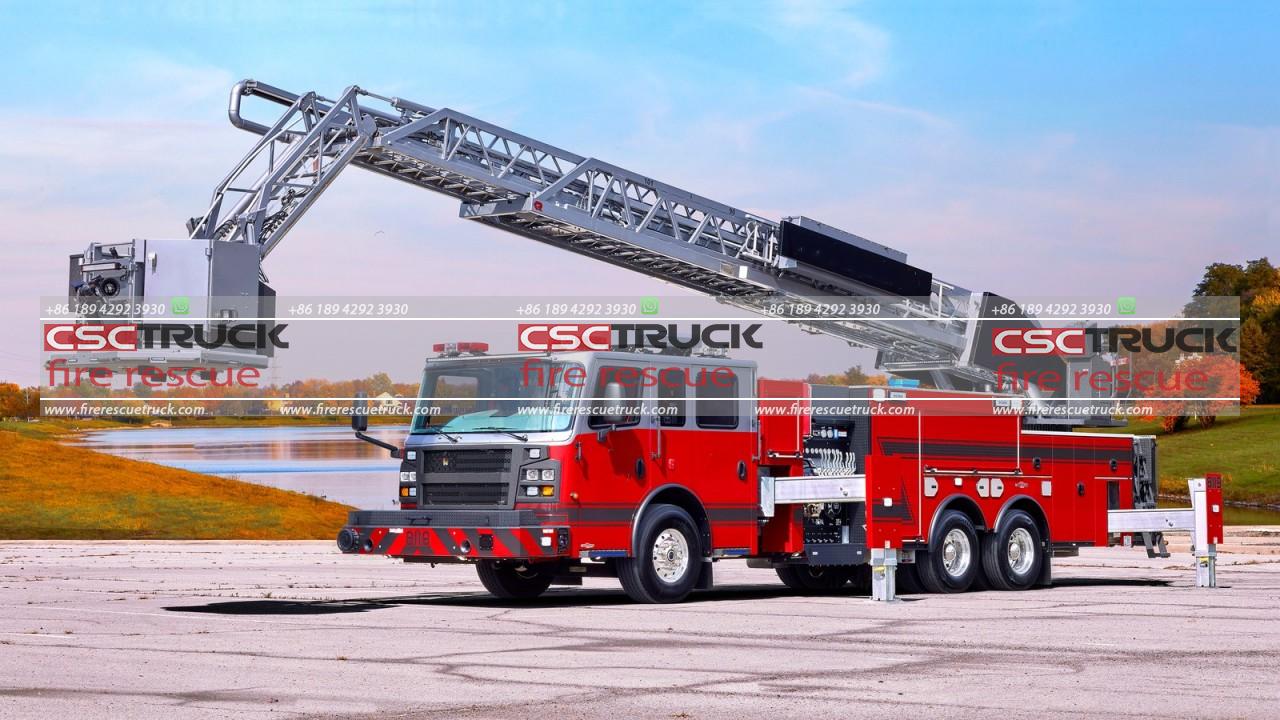
To ensure stability and safety during operation, aerial fire trucks are equipped with outriggers. These extendable supports are deployed before the ladder or boom is extended, providing a sturdy base for the truck and preventing it from tipping over. Outriggers increase the stability of the vehicle, allowing firefighters to work with confidence at elevated heights.
Now, let’s dive into the water delivery system of an aerials fire truck. Typically, these trucks are equipped with a water pump, a water tank, and a waterway system that facilitates the flow of water from the source to the fire. The water pump, powered by the vehicle’s engine, generates the necessary pressure to propel the water through the system. The water tank, which is located on the truck, holds a significant amount of water to supply the firefighting operation. The waterway system includes pipes, valves, and nozzles that control the direction and flow of the water.
When an aerials fire truck arrives at the scene of a fire, the firefighters position the vehicle in a strategic location. They then extend the ladder or boom, taking into account factors such as wind conditions and obstructions. Once the ladder or boom is in position, firefighters can ascend it to gain access to the affected area. The water delivery system comes into play at this stage.
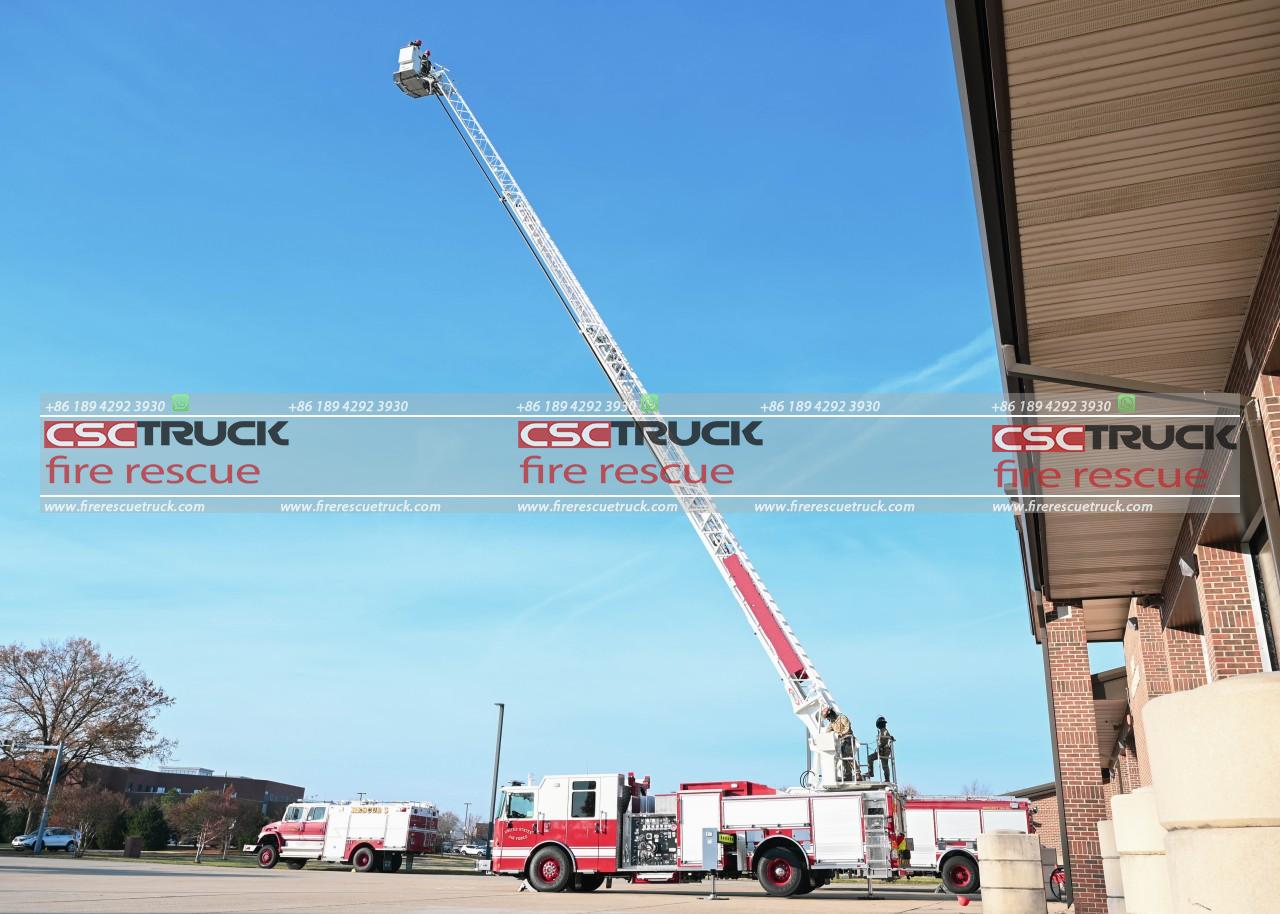
The waterway system of an aerials fire truck allows firefighters to direct water to the fire with precision. Nozzles are attached to the end of the ladder or boom, enabling firefighters to adjust the angle and flow of the water. The elevated position of the truck allows the water to be delivered directly onto the fire, increasing its effectiveness in extinguishing the flames.
In addition to delivering water, aerial fire trucks can also serve other purposes during firefighting operations. They can be used to rescue people trapped in high-rise buildings by providing a safe means of evacuation. The elevated platform of the truck can be used to access windows, balconies, or rooftops, allowing firefighters to perform rescues quickly and efficiently.
Furthermore, aerial fire trucks often come equipped with additional equipment to aid in firefighting efforts. These may include ladders, ropes, ventilation fans, and specialized tools to break through barriers or gain access to enclosed spaces. These features make aerials fire trucks versatile and valuable assets in the firefighting arsenal.
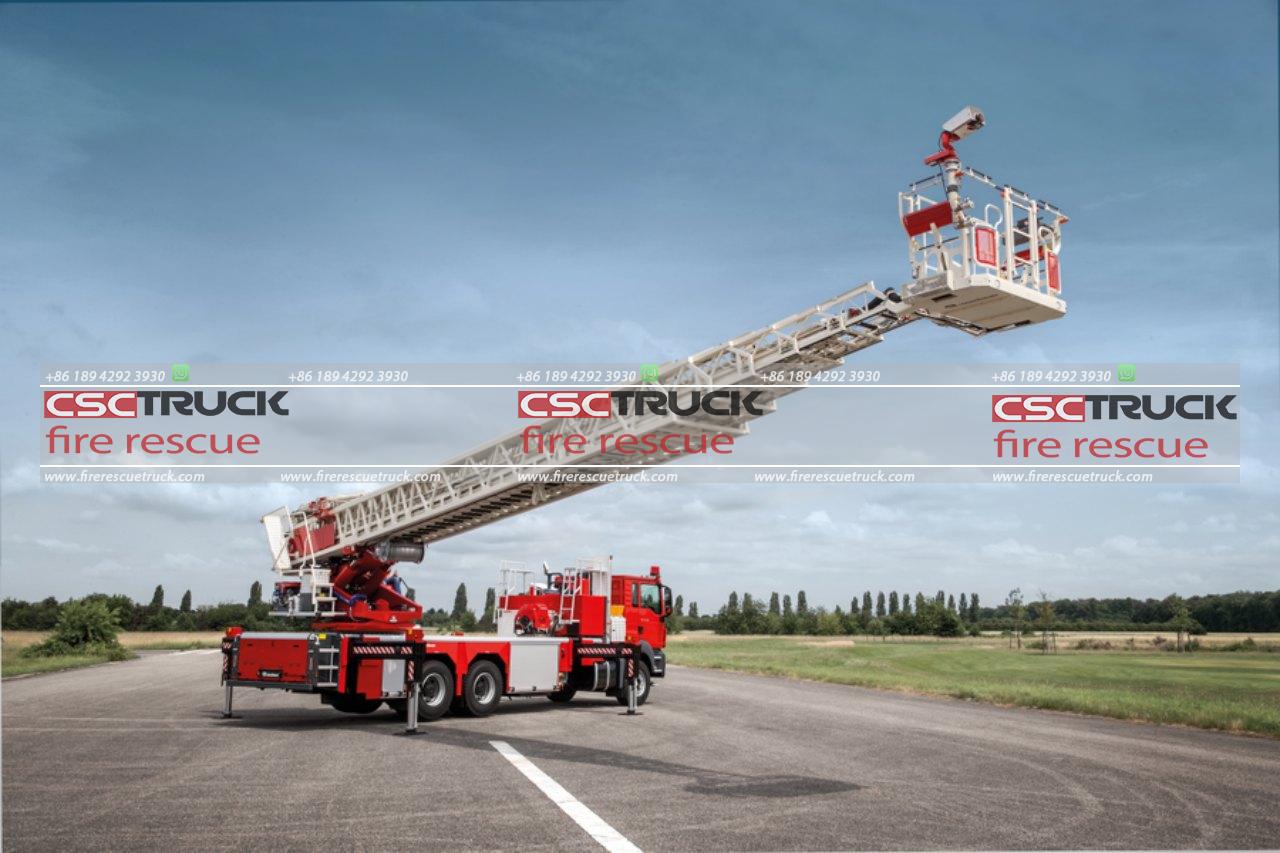
Moreover, the design and capabilities of aerials fire trucks continue to evolve, incorporating advanced technologies to enhance their effectiveness. For instance, some modern aerial fire trucks are equipped with telescoping or articulating booms, which offer increased maneuverability and flexibility in reaching challenging areas. These booms can bend or extend around obstacles, allowing firefighters to access spaces that would have been inaccessible with traditional ladder designs. This adaptability is especially valuable in urban environments where buildings are closely situated or when there are obstructions such as trees or power lines.
In addition to their reach and water delivery capabilities, aerial fire trucks are often equipped with advanced firefighting systems. These systems can include elevated master streams, which are large-capacity nozzles mounted on the ladder or boom that can deliver a high volume of water onto the fire. These master streams are particularly useful when combating large-scale fires or when a concentrated and powerful water flow is required.
Another noteworthy feature found in some aerial’s fire trucks is the incorporation of foam systems. Foam is a firefighting agent that can be mixed with water to create a foam solution. This solution enhances the water’s effectiveness by reducing surface tension and increasing its ability to penetrate materials and extinguish fires. Foam systems can be especially beneficial in situations where flammable liquids are involved, such as industrial fires or vehicle fires, as they help to smother the flames and prevent re-ignition.
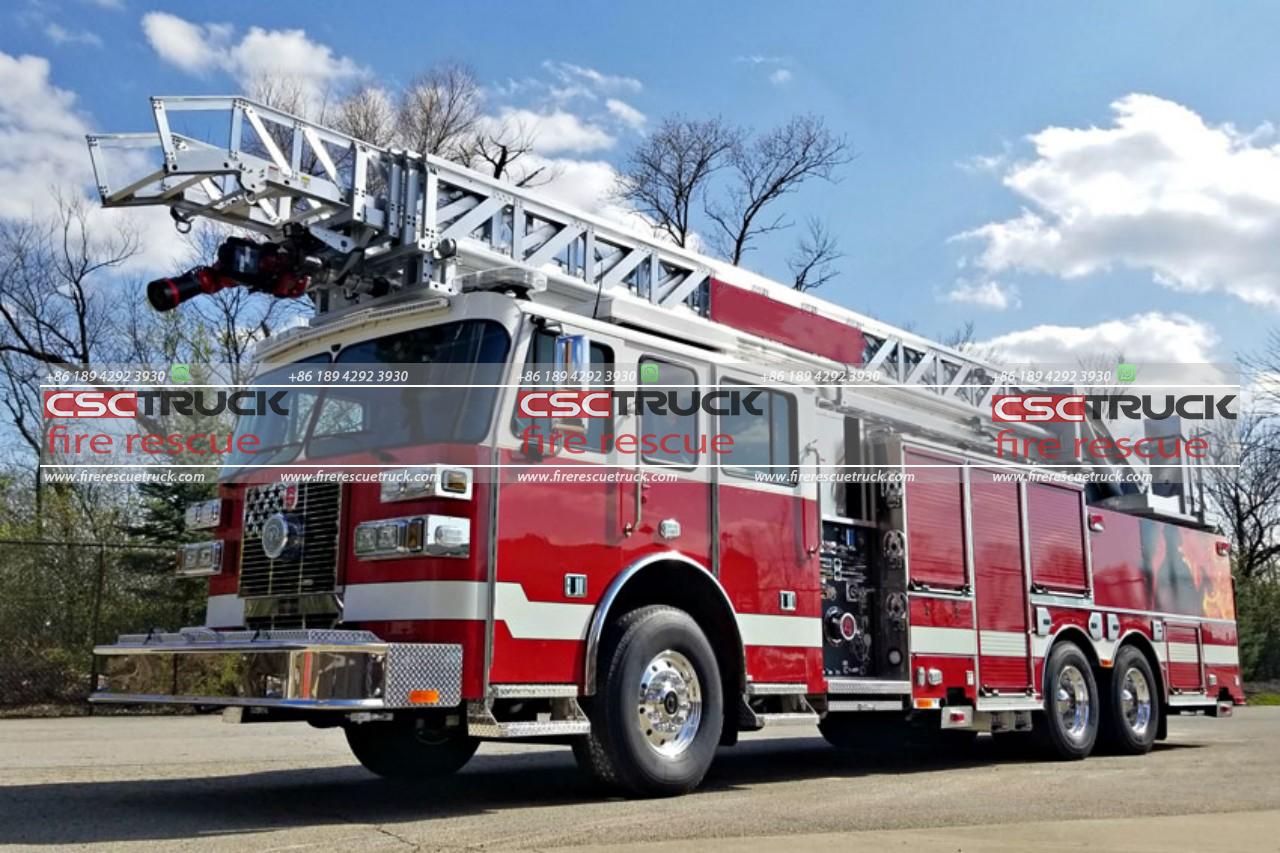
Furthermore, aerial fire trucks often come equipped with state-of-the-art communication systems and integrated command centers. These technological advancements allow firefighters to communicate effectively with each other and with the incident commander, ensuring efficient coordination and decision-making during firefighting operations. Real-time data and video feeds can be transmitted from the elevated platform to the command center, providing crucial information about the fire’s progress and helping to develop effective strategies.
It is worth noting that operating an aerials fire truck requires specialized training and expertise. Firefighters undergo rigorous training programs to learn how to safely operate the vehicle, extend and position the ladder or boom, and effectively control the water flow. Additionally, they receive training in fire behavior, rescue techniques, and the use of auxiliary equipment. This comprehensive training ensures that firefighters can effectively and safely utilize the capabilities of an aerials fire truck during emergencies.
In conclusion, aerial fire trucks are essential assets in modern firefighting operations. Their ability to extend the reach and provide elevated water delivery enables firefighters to combat fires in high-rise buildings, inaccessible areas, or situations where traditional firefighting methods are inadequate. With their advanced technologies, stability features, and integrated systems, these trucks have become indispensable tools for firefighters worldwide. As technology continues to advance, aerial fire trucks will undoubtedly become even more sophisticated, further improving their effectiveness in saving lives and protecting property.
